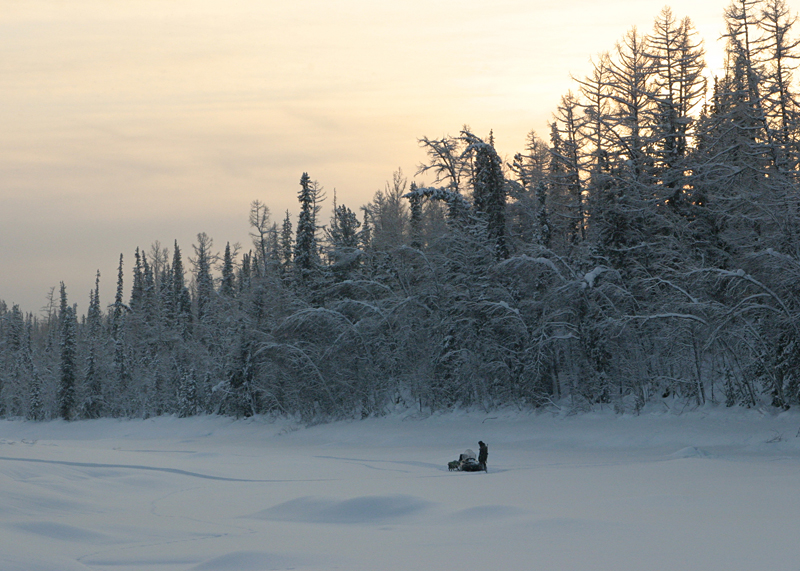Suppose you’d spent a year of your life documenting fur trappers in Siberia, enduring a brutal, sub-40-degree winter and torrential summer mosquitoes. And yet no one wanted to see your movie—or even to pay to assemble the raw footage into a movie. Then, out of the blue, Werner Herzog calls. Vould you mind if I edited and narrated your ferry interesssting kino-images? he asks. How do you think Dmitry Vasyukov answered?For Herzog, the benefits are pretty clear: No freezing Siberian temperatures, no biting mosquitoes, and he never even had to leave his sunny Los Angeles home. As a result, Happy People is minor Herzog (or major Herzog-Vasyukov, depending on your perspective). Still, for insomniac fans of that old KCTS show Alone in the Wilderness, about the droll/insane chap building a cabin in Alaska, there’s plenty of satisfying snow-and-axe work on display here.Herzog, predictably, fetishizes the trappers’ purity and simplicity of life. “They are truly self-sufficient,” he purrs. “They are truly free.” He barely acknowledges the trappers’ snowmobiles and boats with outboard engines, concentrating instead on how they make (other) boats of wood and craft their own birch skis. When one little village girl goes out to harvest pine nuts with her father, who wields an amusingly Thor-size mallet, Herzog declines to comment on her Pokemon T-shirt.The bearded trappers, it must be said, have less charisma than their faithful dogs. (Does Werner have a soft spot for the puppies? I think so.) Unlike Herzog’s great and horrifying Grizzly Man (another found-footage exercise), there is no crazy charismatic Timothy Treadwell figure at this doc’s center. These taciturn woodsmen are merely specimens for Herzog to examine, something like the Texas dolts and killers of his superior recent Into the Abyss. But there you were forced to consider the larger issues of capital punishment and violence in America. Here, Herzog excludes all context and judgment. Does he approve of the fur trade, killing sables for fashion? Are these trappers truly in central Siberia by choice? Or do they lack the education and skills to live elsewhere in Russia?Still, Herzog does stop to consider the indigenous Ket people, something like our own Inuit, largely decimated by Soviet-era policies, poverty, and alcoholism. “It’s our own fault,” says one sad tribal member, and their lined, weary faces remind you of Edward S. Curtis’ Indian portraits. The film also has one Fitzcarraldo moment—something so large and strange you can’t believe you’re seeing it. That’s when, in May, the massive Yenisei River comes unfrozen like a grinding conveyor belt of ice headed north to the Arctic Ocean. Now that is something I’d like to see with my own eyes. Maybe Herzog would, too.film@seattleweekly.com
Suppose you’d spent a year of your life documenting fur trappers in








